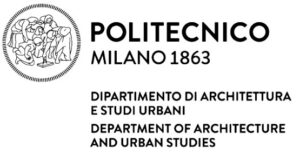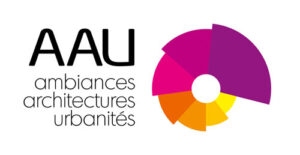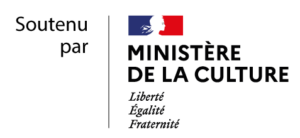
Localisation
Milan, Italie
Ambiances en traduction – 2014/2017
Ce Groupement de Recherche International du CNRS (GDRI) a été créé à l’initiative du Réseau International Ambiances et propose d’explorer la problématique des ambiances en traduction. Le mot « traduction » doit être compris ici au sens large du terme, non réduit à une dénotation strictement linguistique, même si ce plan est bien évidemment présent et partie constitutive du projet. En mettant l’accent sur la traduction, il s’agit à la fois de reconnaître la pluralité des versions et modes d’accès aux ambiances, de mettre au travail la notion d’ambiance en l’inscrivant dans un dispositif collaboratif, et d’approcher la thématique des ambiances architecturales et urbaines en s’intéressant aux écarts et déplacements qu’elle convoque.
Mais encore, en thématisant l’ambiance en termes de traduction, nous affirmons un triple positionnement :
- Nous nous situons au croisement des mondes scientifiques, opérationnels et artistiques. Les traductions qui seront entreprises dans le projet s’appuieront sur les acquis de savoirs, méthodes et ressources issus de ces trois mondes.
- La posture générale adoptée peut être définie de pragmatiste. C’est au moyen d’expérimentations que nous souhaitons travailler sur les ambiances, en nous intéressant aux effets produits, conséquences et circulations d’une telle notion.
- La problématique de la traduction fonctionne à la fois comme une entrée dans la thématique des ambiances et comme un principe du travail collaboratif à entreprendre. Le dispositif méthodologique retenu consistera précisément à se « mettre en traduction ».
Cette entrée par la « traduction » peut être déclinée selon quatre plans :
Traduction linguistique : clarification de la notion d’ambiance
Cette première modalité de traduction consiste à rechercher des équivalents dans d’autres langues au terme français d’ambiance. De toute évidence il n’existe pas de mot exactement identique à celui-ci en anglais, en italien, en danois ou encore en portugais… En procédant au travail de traduction, il s’agit ici de faire jouer l’écart entre les cultures et mettre au travail l’« hospitalité langagière » telle qu’en parle Paul Ricœur. Cette mise à l’épreuve de la langue étrangère suppose donc d’abandonner la fiction d’une traduction parfaite et littérale pour lui préférer une entreprise de reformulations successives. En cherchant des équivalents et en s’interrogeant sur la meilleure version possible, c’est à chaque fois un nouveau champ sémantique qui s’ouvre, une nouvelle manière de découper le réel qui apparaît, nécessitant de clarifier autant que possible les acceptions du terme « ambiance » et révélant par là même les potentialités et limites du mot français. En bref, le passage par la traduction linguistique devient un moyen heuristique de déconstruire cette notion, de mettre en évidence ce qu’elle contient d’implicite, de faire apparaître des ressources jusqu’alors inexplorées et d’ouvrir son aire de signification. Il s’agit donc ici de tenter de faire œuvre de clarification.
Traduction disciplinaire : exploration de passerelles scientifiques
Cette deuxième modalité de traduction consiste à construire les conditions d’un échange et d’un apport mutuel entre des champs disciplinaires distincts et pourtant tout aussi partie prenante de la thématique des ambiances. C’est ainsi que l’on peut se demander comment des modèles d’intelligibilité, des méthodes ou des écritures aussi différentes que celles issues de l’anthropologie sensible, de la modélisation informatique, de l’architecture, des études urbaines, de la physique appliquée ou encore du monde de l’art, peuvent chercher à s’entendre, à se rencontrer, voire à s’hybrider et à entrer dans un dialogue fécond autour du monde sensible. Ici, la notion interdisciplinaire d’effet sonore telle que développée au sein du laboratoire CRESSON peut sans doute servir de guide ou de référence pour mettre en place les conditions de ce dialogue. Cependant, il s’agira moins de chercher à construire ensemble un outil interdisciplinaire unique et achevé que d’explorer plus modestement divers ponts, terrains d’entente, et transversalités entre les démarches convoquées.
Traduction sensorielle : expérimentation d’expressions multimodales
Cette troisième modalité de traduction consiste à expérimenter des passages entre les sens. Un des points aveugles de la notion d’ambiance concerne la question de la plurisensorialité, mieux encore de l’intersensorialité in situ. De nombreux travaux ont été développés qui mettent l’accent sur une modalité sensible particulière : la lumière, le son, l’odeur, la chaleur… On peut alors se demander comment s’opère la relation entre diverses modalités sensorielles aussi bien en termes d’expérience habitante que de conception, comment une modalité est susceptible de s’articuler ou d’entrer en résonance avec une autre. Le lien audio-visuel est bien sûr celui qui vient le plus immédiatement à l’esprit (avec les ressources issues du cinéma en particulier) et il sera bien évidemment mobilisé. Mais nous ne souhaitons pas pour autant nous limiter au rapport image/son. D’autres modalités sensorielles toutes aussi importantes en termes d’ambiance seront considérées (odeur, chaleur par exemple), qui mettent à l’épreuve les moyens mêmes dont nous disposons pour les exprimer ou les représenter. Le monde de l’art devrait jouer un rôle important à cet égard.
Traduction professionnelle : prospection de modes opératoires
Cette quatrième modalité de traduction questionne les passages et les circulations possibles entre le monde de la recherche et celui de la conception architecturale et urbaine. Comment les divers acteurs en charge de la conception et de l’aménagement de l’espace se saisissent-ils du domaine des ambiances ? Quels sont les outils, les transferts, et les processus mobilisés pour rendre opératoire la notion d’ambiance dans de tels cadres professionnels ?
Il s’agit de se demander comment le domaine des ambiances se transforme et s’hybride dès lors qu’il est mis à l’épreuve de pratiques de conception et d’enjeux d’aménagement. Le propos consistera ici à s’appuyer sur l’expérience de chaque équipe pour mettre en perspective les divers contextes, pertinences et usages de la notion d’ambiance. Ce plan de traduction sera délibérément orienté vers une démarche prospective, à la recherche de nouveaux modes opératoires en matière de design.
Ces quatre niveaux de traduction sont au cœur du projet. En se situant entre les langues, entre les disciplines, entre les sens et entre les activités, nous mettons en place un dispositif d’enquête (au sens fort du terme) apte à intégrer la complexité du domaine des ambiances et la diversité scientifique et culturelle des équipes.
En nous orientant vers des opérations de clarification, d’exploration, d’expérimentation et de prospection, nous évaluons la possibilité d’une posture pragmatiste en matière d’ambiances. A cet égard, il s’agit moins de faire état d’un savoir constitué ou de s’arrêter à un modèle d’intelligibilité de l’ambiance que de mettre à l’épreuve un domaine de recherche et d’action en train de se faire.
Scientific Officers:
- Jean-Paul Thibaud, AAU-CRESSON, Graduate School of Architecture of Grenoble | International Ambiances Network
- Daniel Siret, AAU-CRENAU, Graduate School of Architecture of Nantes | International Ambiances Network
Support:
Professional translations
This CNRS International Research Group (GDRI) was initiated by the International Ambiances Network to explore the issue of ambiances in translation. The word ‘translation’ should be taken in the broad sense of the term, and not reduced to a strictly language-based meaning, though this aspect is obviously present in the project, indeed a key component. By putting the accent on translation, our purpose is to acknowledge the plurality of versions of and means of access to ambiances, to bring into play the notion of ambiance by situating it in a collaborative process; and to address the topic of architectural and urban ambiances by looking at the disparities and shifts this topic involves. The fourth form of translation aims to investigate the scope for exchange and circulation between the world of research and that of architecture and planning. How do the various players tasked with designing and developing private and public space grasp the field of ambiance.
What tools, transfers and processes are brought into play to make the ambiance concept operational in a professional framework?
The aim here is to look at how the field of ambiances is transformed and hybridized as soon as it comes into contact with design practice and development constraints. We shall draw on the experience of each team to put into perspective the various contexts, applications and uses of the ambiance concept. This form of translation will deliberately focus on a forward-looking approach, in search of new modus operandi for design.
The four levels of translation are central to the project. By placing ourselves between languages, disciplines, senses and activities we can set up a process of investigation capable of taking account of the complexity of the field of ambiances, and of the scientific and cultural diversity of the teams involved.
By focusing on operations designed to clarify, explore, experiment and look to the future, we can assess the possibility of a pragmatist attitude to ambiances. In this respect our purpose is not so much to take stock of existing learning or to stop at a single model for making sense of ambiance, but rather to put to the test a field of research and action that is in the process of taking shape.
Participants
Polytechnic of Milan (Italy) – DAStU – Lab. di Simulazione Urbana ‘Fausto Curti’ (labsimurb)
- Cecilia Chiarini
- Eugenio Morello
- Barbara E. A. Piga
- Rossella Salerno
- Irene Vegetti
University of Milan (Italy) – Department of Cultural Heritage and Environment
- Marco Boffi
- Nicola Rainisio
Graduate School of Architecture of Nantes (France) – Lab. AAU / CRENAU
- Daniel Siret
- Thomas Leduc
Graduate School of Architecture of Grenoble (France) – Lab. AAU / CRESSON
- Jean-Paul Thibaud
- Rainer Kazig
Université de Cergy – Pontoise (France) – Department of Geography and History
- Damien Masson
Aarhus School of Architecture (Denmark) – Department of Urban Planning, Institute of Landscape and Urban Development
- Niels Albertsen
École d’Architecture de l’Université Laval (Canada) – Groupe de Recherche en Ambiances Physiques (GRAP)
- Claude MH Demers
- André Potvin
Université du Québec à Montréal – UQAM (Canada) – École des Arts Visuels et Médiatiques
- Mario Côté
Federal University of Bahia (Brazil) – Laboratório Urbano (PPG-AU/FAUFBA)
- Osnildo Adão Wan-Dall Junior
Muthesius University of Arts, Kiel, Germany
- Imme Bode
University of Biskra (Algeria) – Department of Architecture – LACOMOFA
- Yacine Saadi
- Safa Daich
Outcomes of the seminar ans workshop
The main focus of the GDRI 2017 in Milan was the translation of theories and practices related to the Ambiances’ researches into professional terms. More in detail, the goal was to share among the various players how do they deal with the ambiances topic and which tools and processes are brought into practice to make the concept operational in the professional framework.
With the aim of investigating the exchange and circulation between the world of research and the one of architecture and planning the three days of collaboration were organized in two main parts, namely a seminar and a workshop.
Three invited speakers coming from different disciplines, and not belonging to the GDRI, were invited for presenting their approach to the ambiances topic and its implications in the practice. Tonino Griffero, a philosopher teaching aesthetics at Roma Tor Vergata university, presented its investigation on pathicity and atmospheres, atmospheric games and atmospheric authority, focusing the attention on the relationship between atmospheres and the body. Paolo Inghilleri, a social psychologist teaching environmental and cultural psychology at the Università degli Studi di Milano, presented the relationship between inter-subjectivity and the environment, and hence the link between atmospheres and the quality of the experience through theories and case studies applications; Roberto Gigliotti, an architect teaching exhibit design at the Libera Università di Bolzano, presented the topic of exhibitions ant their atmospheres as a multisensory narrative, where the subject of the exhibition becomes the space itself and hence the architectural experience. A rich interdisciplinary debate followed the presentations.
The second part of the GDRI was devoted to a practical workshop among colleagues coming from different universities and disciplines. The goal of exchanging theories and modus operandi adopted by the different research units were reached thanks to a group work on a case study application, that is the Porta Nuova area in Milan. The workshop was articulated in three main phases:
- an individual experiential walk in the area and the onsite collection of photos, sketches and similar;
- the work in teams based on the onsite experience for defining a common interpretation of the area and for elaborating a final representation;
- the presentation of the outcomes to the colleagues and a final general discussion.
The collaborations between researchers with different approaches and backgrounds represented a way to better understand the theoretical perspective and methodology of investigation by each one, and to cooperate to find novel integrated modalities. The process of sharing viewpoints and to collaborate in an interdisciplinary way for analyzing and proposing scenarios of transformation for a specific urban environment was the fundamental aim of the workshop. More in detail, the goals of the practical work were to define:
- an individual interpretation of the ambiance of the place as it is;
- a perspective of what the ambiance of a place could be or become in the future;
- a set of materials to describe and communicate the experienced ambiances.
By focusing on the linkage between research and practice we could investigate the possibility of a pragmatic attitude to ambiances that puts the fields of research into action.
The presentation of the workshop outcomes was the occasion for exchanging the experiences among the teams and the starting point of the final debate on the “translating ambiances” topic, its relevance and the need of further interdisciplinary collaborations.






